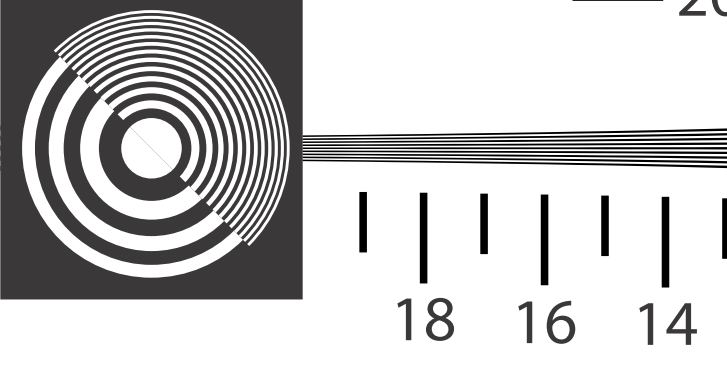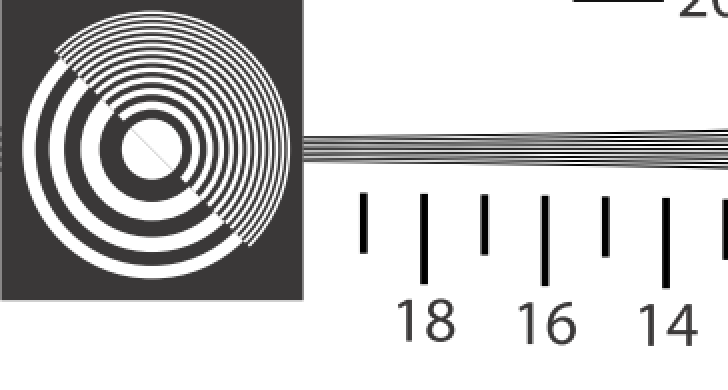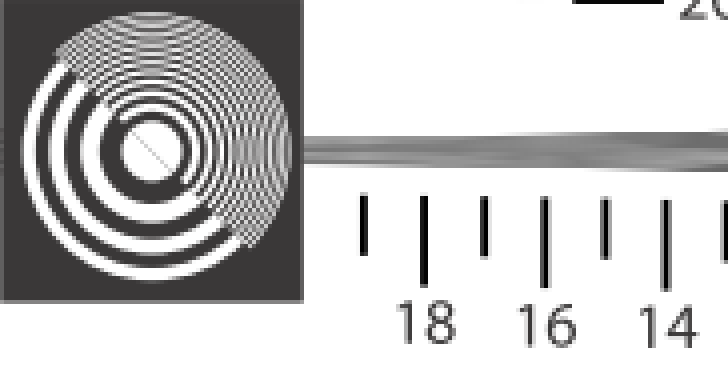A photography tutorial about sensors would be incomplete without a discussion about sensitivity, noise, resolution and the interconnection between them. Without question the marketers and especially the sales people will emphasize the resolution as the most important parameter of the sensor. Wrong! You can buy a compact camera that uses a high resolution sensor without seeing better quality in your photos as a result of that. Or you can get another camera with a lower resolution sensor (however, not too low) that will produce much better quality images, especially, in more difficult lighting conditions.
The pixel resolution of a digital sensor represents the number of distinct pixels (points) the image is actually composed. In analogue (film based) photography the resolution has a slightly different definition: it represents the highest number of distinct lines per unity of length that are still visible before becoming indistinguishable. This is also known as spatial resolution and it is used in digital photography too as an overall characterization of the whole optical system (including sensor). To determine the spatial resolution a special resolution chart is used as target (see the ISO 12233 Test Chart).
It is obvious that pixel resolution determines in the end the spatial resolution: a digital imaging system cannot achieve a spatial resolution higher that the pixel resolution would allow; on the other hand, the spatial resolution is usually lower than the pixel resolution because there are other components, like the optical resolution of the lens, that contribute to the final result.
The following image samples show the relation between the pixel resolution and the spatial resolution ignoring the other components of the camera.
See how the low pixel resolution deteriorates the overall (spatial) resolution in this fragment of resolution chart. Compared with case (a) – the reference – in case (b) the resolution was reduced 4 times while in case (c) it was reduced 16 times. This experiment is the basis for the marketing ploy “The cameras with the highest resolution sensors (i.e. the largest number of pixels) are always better”. Is it true? If you ignore anything else, it is. But in reality the rest of the camera counts as well. It is usually the optics (lens) where corners are cut in the construction of the cheap compact cameras. The result is similar to the next image sample where a high resolution sensor is combined with a low quality lens that reduces the spatial resolution:

(d) High pixel resolution combined with an average quality lens: some of the possible spatial resolution is lost (click on image for full size)
As a photographer I would be more interested to know the spatial resolution of a camera than just the pixel resolution of the sensor. Unfortunately, the manufacturers rarely publish these numbers. If you spend enough time researching on solid and documented camera reviews, you may find resolution tests that will reveal the truth about the spatial resolution you can expect from a camera that you intend to get; such a site is Digital Photography Review.
The final question is “How much resolution is really useful for my needs?” There is no immediate answer to this question. Probably the most accurate answer is “It depends…” But it won’t be fair to leave you with this answer. The following guidelines may help you:
- The resolution of the camera must match at least the highest resolution of your viewing device or media used for printing. In reality you probably would need twice as much.
- Cropping after shooting is common. As a rule of thumb, never remove more than 50% of your photo; if you need more, you probably didn’t do a good job in the first place when you shot the picture. As consequence, the resolution of the camera should only allow you that much margin. If you frame your scenes properly at the time of shooting, there is no need for more than 20% margin.
- If you are only interested in showing your pictures on a monitor or a HDTV, a 4 megapixel resolution would be enough; this would include about 20…30% margin for cropping and other image manipulations in post-processing. Digital frames and tablets require even less (most are just 800 x 600 or 1024 x 768).
- If printing is the final goal, the resolution may increase significantly, especially if you intend to print in large formats. For starters that print up to 5 x 7” with an average density of 300 dpi, the same 4 megapixel resolution mentioned above for monitors should be ok. As soon as you move to 8 x 10” with 300 dpi, the need for resolution increases as well 8 megapixels are required at least. If you intend to go higher in both format and print quality the resolution requirements may quickly go above 20 megapixels. But in that case you wouldn’t read my pages…
By the way, most of the photos used to illustrate this blog are 640 x 480 pixels and those in the Gallery section are 800 x 600 pixels.
In conclusion, if you are just a regular person with no intention of going professional in the near future, a camera with 8…12 megapixels will cover all your needs. The truth is that megapixels become cheaper every day and the “sweet spot” for resolution moves towards higher numbers making the resolution question almost irrelevant. Want to buy a new camera? Don’t fall for the resolution hype anymore. Just look at the other qualities you really need. The following posts will give you even more clues. Stay tuned!



